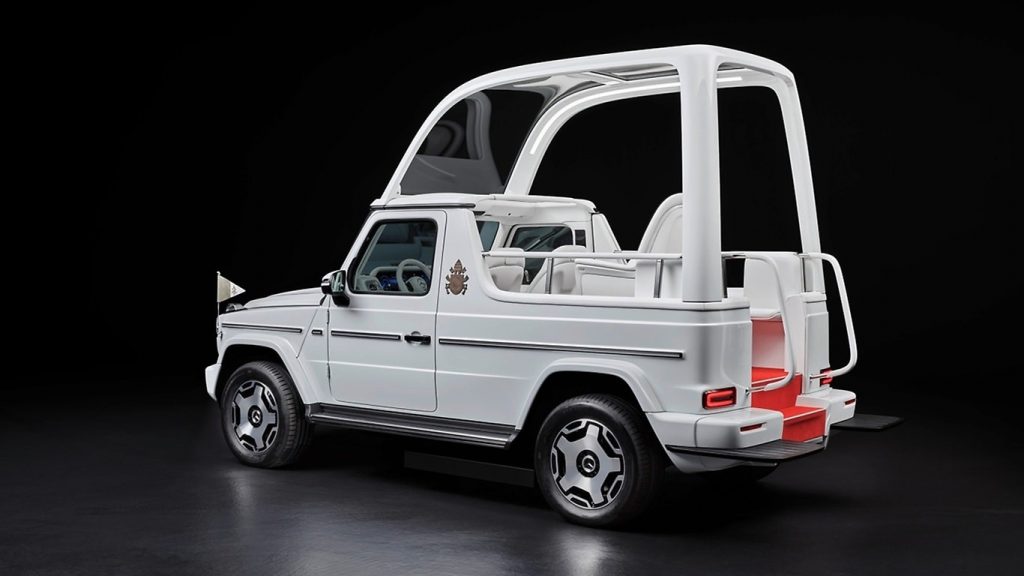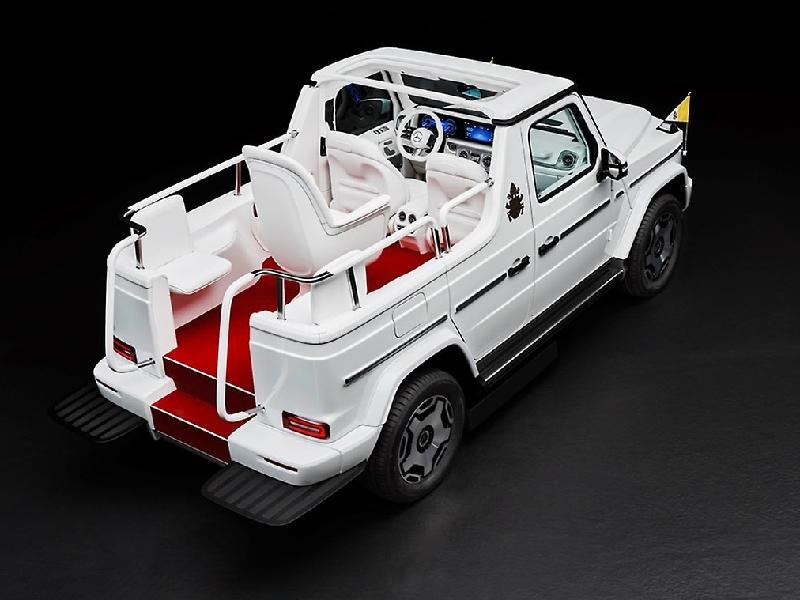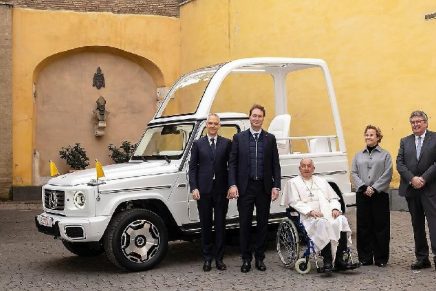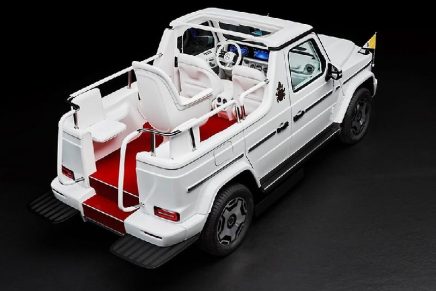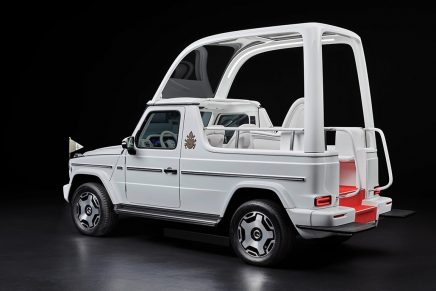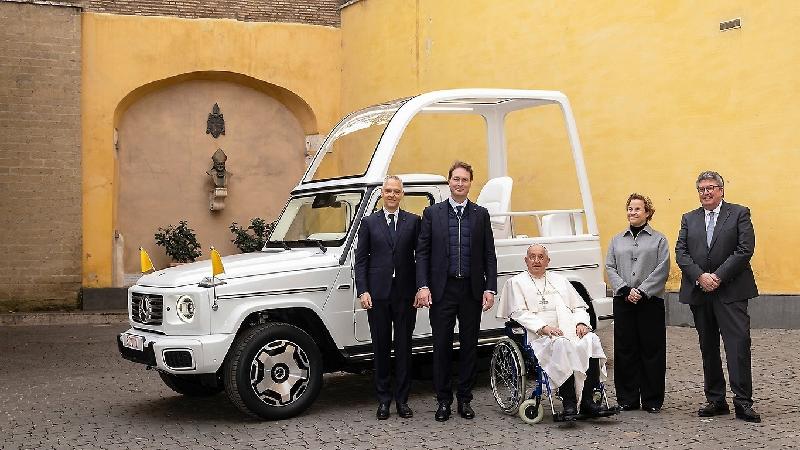
photo: Pope Francis receives the first electric “Popemobile”. CEO Ola Källenius (2nd from left) was accompanied by Britta Seeger, Member of the Board of Management responsible for Sales and Marketing, Marc Langenbrinck (left), CEO of Mercedes-Benz Italia and Karl Schregle (right), Head of Sales MBC Europe, at the appointment just outside St Peter’s Basilica. @Mercedes-Benz
Mercedes-Benz has been supplying cars to the Vatican for 94 years and for the past 45 years, the Pope has been using the renowned “Popemobiles” based on the Mercedes-Benz G-Class. Now, for the first time, the Popemobile from Mercedes-Benz is going all-electric.
For nearly a century, Mercedes-Benz has been the Vatican’s chariot of choice, crafting vehicles that blend reverence with refinement. From stately saloons to the iconic Popemobile, their partnership has been a testament to luxury engineering serving a higher purpose. Now, in a bold leap toward the future, the Popemobile is ditching fossil fuels for a battery pack, unveiling its first-ever all-electric iteration.
But while this may sound like a heavenly match of innovation and sustainability, let’s take a closer look.
Electric Redemption for the Jubilee?
Debuting in time for the 2025 Jubilee—a monumental event held once every 25 years, drawing millions of pilgrims to Rome—the electric Popemobile promises zero local emissions and a silent, reverent glide through Saint Peter’s Square. On the surface, it’s a nod to Pope Francis’ Laudato Si encyclical, a call for humanity to embrace sustainable development.
Yet, there’s an irony here that’s hard to ignore. A vehicle designed for the planet’s most visible advocate for environmental stewardship is still a bespoke, pearl-white luxury car, crafted by one of the world’s foremost manufacturers of high-end, high-consumption automobiles. While the message is admirable, is this a case of gilded greenwashing?
Fit for a Pontiff
The electric drivetrain of the G580 EQ isn’t your average EV tech. It’s specifically calibrated for the Popemobile’s stately procession speeds—picture a turtle with an entourage. The Vatican’s engineers and Mercedes-Benz’s coachbuilders collaborated to create a one-of-a-kind masterpiece, complete with a centrally positioned, height-adjustable swiveling seat for the Pope. This throne-like feature ensures His Holiness can address pilgrims from every angle, blending divine accessibility with a touch of theatrical flair.
The modifications are undeniably ingenious:
The removal of the roof and seamless redesign of the B-pillar for an iconic profile.
A bespoke hardtop for rain-soaked blessings.
Rebuilt rear doors crafted in traditional coachbuilding style.
A Glorious Legacy, but Time for a Soul Search?
Mercedes-Benz’s history with the Vatican spans nearly a century, beginning with the Nürburg 460 Pullman in 1930, evolving through decades of lavishly customized Landaulets and G-Class adaptations. Each Popemobile has been a marvel of engineering, meticulously designed to reflect its era’s grandeur.
However, as the electric Popemobile carries this legacy forward, it also raises questions about the luxury industry’s role in promoting sustainability. Can a brand synonymous with high-performance, high-emission vehicles truly champion environmental change with one gleaming EV?
Heavenly Intentions, Earthly Contradictions
The all-electric Popemobile is undeniably a symbol of progress, a gesture toward aligning tradition with the pressing demands of our climate-challenged world. But it’s also a reminder of the tension between luxury’s indulgence and the humility called for in a time of crisis.
For Mercedes-Benz, this is more than a PR win; it’s an opportunity to inspire genuine transformation. For the Vatican, it’s a chance to embody the spirit of Laudato Si not just in ceremonial splendor but in the simplicity and sincerity of its choices.

